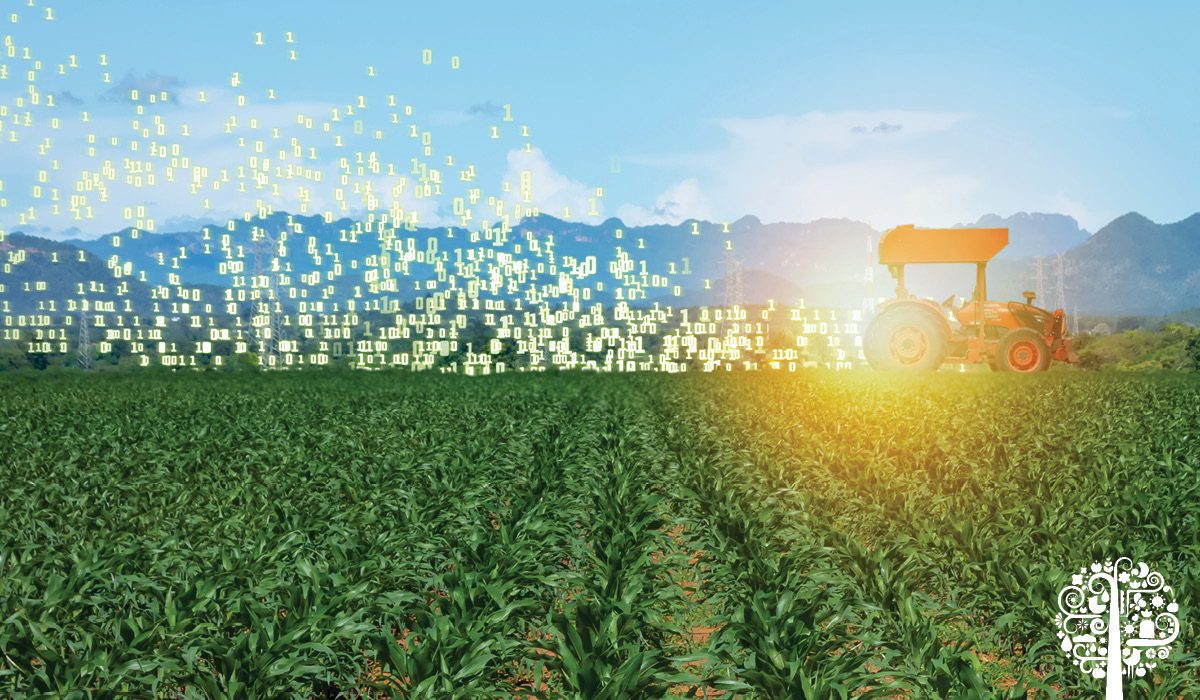Data-Driven Farming: The Past, Present, and Future
What do you think of when you hear the word “technology”? I usually think of computers, robots, and electronics, but that’s because I was raised in a digital era. Despite this common misnomer, the definition of technology is “The application of scientific knowledge to change and manipulate the human environment.” The application of scientific knowledge in agriculture dates way back before any of us were born. We have been using tools to manipulate our environment for agricultural purposes for around 12,000 years. One of the earliest tools was a pestle to grind oats and other grain. Then, we developed animal husbandry and food storage abilities. Those first technological developments would change the course of human history and eventually become what it is today. Technology allowed us to transition from mobile hunter-gatherer communities to stable agrarian societies. The ability to stay in one place allowed us to plan for the future, grow into more prominent civilizations and played a pivotal role in accelerating technological developments that we all use today.
A Fork In The Road
Fast forward a few thousand years to another significant turning point for modern agricultural technology in the United States, the Dust Bowl and Great Depression, in the early 20th century. Soil testing technology had already begun to take shape, but we still did not have enough experience to predict what was about to happen to our resources. We could not perceive the structure and function of our soil and water resources and thus unwittingly devastated them, nearly destroying ourselves in the process. Nevertheless, we learned a big lesson; we realized that stewarding our natural resources plays a crucial role in our survival.

From this point, there became a fork in the road for agriculture. Some chose to build victory gardens and grow their food as a means of food security, but the main stem of society took a more industrial and global approach, vowing to “feed the world.” As populations grow, we need more extensive systems to accommodate our new size and shape.
The evolution of agricultural technology has allowed us to create more efficient systems of growing, transporting, and genetically manipulating our food in the interest of feeding populations of exponential growth on a global scale. Necessity is the mother of invention. If we were going to sustain a food source for a fast-growing global population, we had to develop technologies and get more efficient.
An Increase in Efficiency
In the last few decades, the tech revolution for farming and gardening has vastly increased our efficiency. Computerized technology has become infused into our gardening and farming practices, from big ag technology to plug and play grow domes for the individual user.
A home gardener can use a pH meter and soil moisture probe, while a small farm can install a weather station to collect on-site climate data. Cloud-based software is everywhere, allowing us to collect, manage, and use data, making our farms and businesses more efficient and cost-effective. These technologies are affordable and available to most people in the developed world.
We can now divert post-consumer waste from landfills and turn it into organic fertilizers and pesticides. Installing water-conserving irrigation systems, automating greenhouses, and utilizing meters for data collection are now commonplace. Even the ability to transport fertilizers, water, electricity, etc., have driven the infrastructure systems that function today.
The Down Side
Although technology has allowed us to farm marginal lands more effectively and maximize climate control of indoor environments, highly mechanized systems have downsides. Big Ag and high-tech efficiency come at a price, often to human health. Disposal of electronic waste, pollution of the environment, mining raw materials, and work conditions are just some progress costs.
A Better Way To Grow
From this, a new way of agriculture is emerging. Regenerative agriculture is a way of making the environment better through farming practices. This new way of growing marries technology with soil health, leading to increased human and environmental health. We can use solar, wind, and hydroelectric to power our indoor facilities and greenhouses. Introduce predatory insects to clear our crops of pests without toxic chemicals. Allow microbes in the soil to unlock nutrients from organic waste products rather than applying salt-based fertilizers. We can use data to make the best decisions for our crops, pocketbooks, and future.
The Future
So, what does the future of ag resemble? Tech has come a long way since the mortar and pestle. We now have AI drones that can capture different imagery and software to interpret the data and identify problems. Drones can capture more data than humans alone, detecting soil moisture levels, plant transpiration levels, nutrient deficiencies, and even pest infestations and hotspots. They can be programmed to sense when a plant is thirsty before it wilts, detect plant stress signals before they are visible, and identify the plant stress source.

AI coupled with automated grow rooms or greenhouses can manage crops remotely, which means we can produce more with less. One can be on the other side of the world and still see the climate data of multiple grow areas in real-time via an app on the phone. Some even allow you to manipulate a greenhouse remotely, opening doors or windows to shift internal conditions! Along with AI helping diagnose a crop’s health, decisions can be made quickly, saving labor and input costs while reducing crop loss. Technologies can be amazing, efficient and save us a lot of money and headache; however, we have to wonder what we are losing on a human level to these technologies.
As we have seen in the past, agricultural decisions that harm the environment and resources are just stealing from our future selves. However, as long as we take important lessons from it, we can use this newfound scientific information to manipulate the world for the betterment of humanity, passing along an efficient, effective, and healthy agricultural world for future generations.




